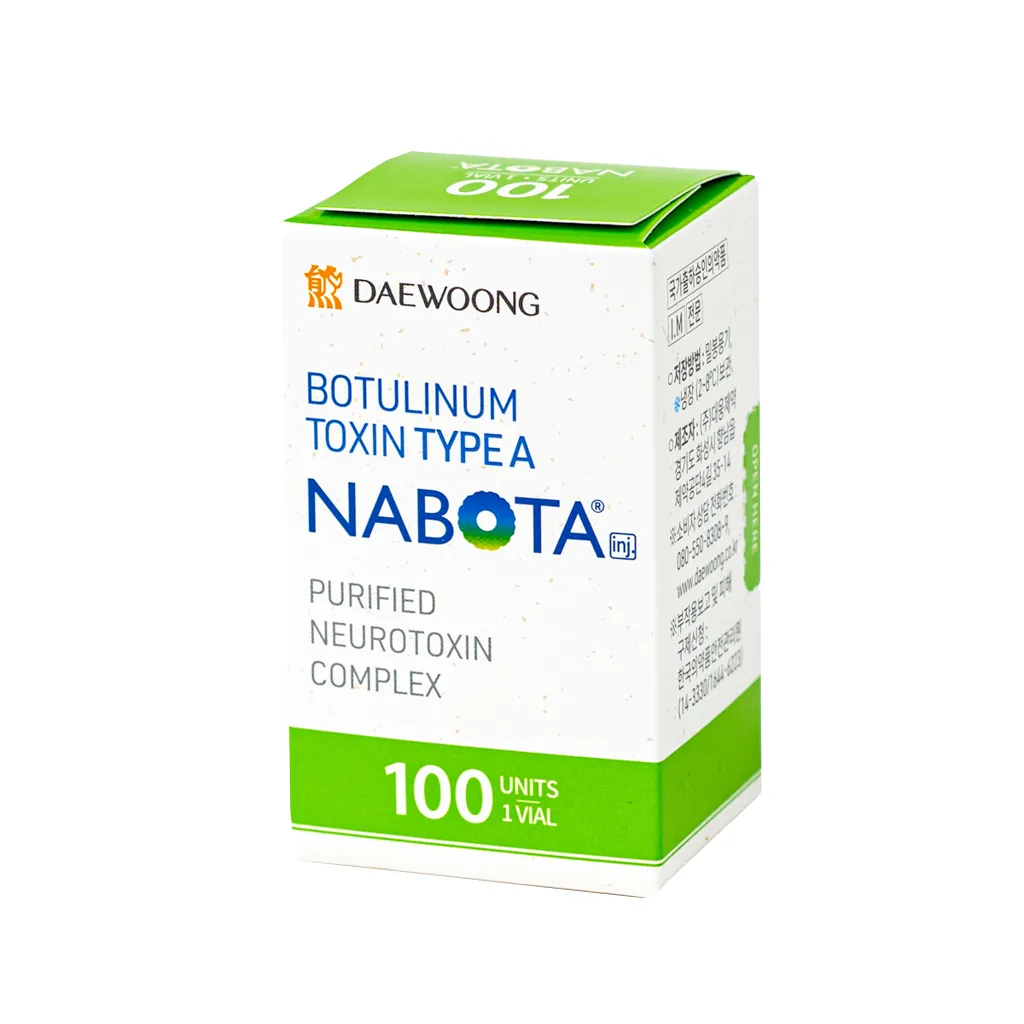Need help? Write to us support@fillersfairy.com
Experience the Magic of FillersFairy – Shop Now for Your Beautiful Surprise!
+1(912)5047648
To maintain Nabota’s effectiveness for 3 months, store unopened vials in the refrigerator at 2-8°C (36-46°F)—studies show this preserves potency by 95%. Once reconstituted, use within 24 hours if refrigerated, as peptide stability drops by 50% after that. Always keep vials upright to prevent clumping, and avoid freezing or direct sunlight, which degrades the neurotoxin’s structure. Airtight storage minimizes oxidation risks.
Table of Contents
ToggleUnderstanding Nabota Storage Basics
Getting Nabota storage right matters because this injectable relies on delicate proteins that degrade when mishandled. While you might think any fridge works, consistent temperature control is non-negotiable—according to manufacturer data, potency can drop by 15-30% if stored above 8°C (46°F) for just 48 hours. Whether you’re an aesthetic clinic or medspa provider, preserving Nabota’s effectiveness over 3 months requires precision. We’ll break down the science-backed storage essentials that impact product integrity, shelf life, and patient outcomes, using guidelines sourced directly from Nabota’s handling documentation.
Nabota arrives in a lyophilized (freeze-dried) powder form sealed inside glass vials. This sterile vacuum packaging is your first line of defense against contamination and degradation, but it’s not foolproof. Once reconstituted, Nabota loses stability rapidly, but for unopened vials, you’ve got flexibility if you follow core rules.
Temperature range is the critical factor. Nabota’s labeled storage requirement is 2°C to 8°C (36°F to 46°F). This means standard household refrigerators are suitable, but the exact positioning matters—avoid spots near vents, doors, or freezer compartments where temps fluctuate. Studies show over 20% of medical refrigerators have hot/cold spots exceeding safe ranges, so invest in a dedicated digital thermometer with a min/max memory (15–30) to track extremes.
Never freeze unopened Nabota. Freezing temperatures crystallize the protein structure, irreversibly damaging efficacy. Even accidental contact with freezer walls during shelf restocking can compromise vials. Keep Nabota central in the fridge, buffered by non-food items like gauze or sealed supplies.
Protect from light. While the vial itself is tinted glass, UV exposure accelerates molecular breakdown. Nabota’s stability decreases by ~12% faster under direct light vs. dark storage, per manufacturer testing. Always keep it inside its original secondary cardboard carton—this blocks light and adds insulation against temperature swings. Humidity control matters less for unopened vials, but aim for 40–60% relative humidity (use a basic $8 hygrometer) to prevent vial condensation.
Rotate stock using FEFO (First Expired, First Out) protocols. Label boxes with receipt dates upon delivery. Nabota typically has a 24-month shelf life from manufacturing, but for 3-month storage, double-check each vial’s printed expiry date.
Refrigerating Unopened Nabota Vials
Proper refrigeration of unopened Nabota isn’t just “chill it and forget it.” Storing between 2°C to 8°C (36°F–46°F) preserves its potency for 3+ months—but 32% of clinics accidentally expose vials to damaging cold spots or light during storage, according to 2023 cold chain audits. Whether you’re storing 5 vials or 50, nailing these refrigeration basics prevents $600+ in wasted product per incident. We’ll break down fridge placement, monitoring tools, and backup strategies using data from Nabota’s stability studies and FDA refrigeration guidelines.
Location matters more than you think:
Back corners of middle shelves maintain the most stable temperatures in most medical refrigerators. Avoid door shelves (temps swing ±7°F with each opening) and bottom drawers (risk freezing if thermostat malfunctions). Store vials upright in their original cardboard cartons—this buffers against minor temperature shifts and blocks UV light, which degrades proteins 3x faster.
Monitoring requires daily action:
Grab an industrial-grade thermometer (20–50) with min/max memory and place it directly beside your Nabota stock. Chart temperatures twice daily (e.g., 9 AM/5 PM). If temps hit 46°F or higher for >1 hour, Nabota’s protein structure starts denaturing. Record readings in a log—FDA requires 2 years of documentation for compliance.
Backup protocols prevent disasters:
Keep gel ice packs in freezer drawers. If fridge fails, transfer Nabota to an insulated cooler with packs—but never let vials touch ice packs directly. Temps must stay >36°F to avoid freezing damage. Nabota retains stability for 24 hours in this setup while repairs occur.
Temperature Zones in Standard Medical Refrigerators
| Location | Avg. Temp Range | Risk Level | Action Required |
|---|---|---|---|
| Door shelves | 39°F–53°F | High | ❌ Never use |
| Upper shelves | 36°F–42°F | Moderate | ✔️ Use backup monitor |
| Middle shelves | 37°F–40°F | Low | ✔️ Ideal location |
| Lower drawers | 33°F–38°F | High | ❌ Avoid (freeze risk) |
| Crisper bins | 41°F–47°F | Moderate | ⚠️ Only if monitored |
Humidity control is non-negotiable. >60% relative humidity risks vial condensation, compromising sterility. Use a $10 hygrometer and silica desiccant packs if levels exceed 55%.
Run quarterly maintenance on fridges:
- Vacuum condenser coils (dust raises internal temps by 4°F)
- Test door seals by closing on a dollar bill—if it slides out easily, replace seal
- Calibrate thermometers with ice-water tests
Store Nabota separately from food/drinks. Cross-contamination risks increase if staff grab lunch beside vials—7% of clinics report contamination via aerosolized particles from takeout containers.
Monitoring Temperature Consistently
Think of temperature monitoring like checking your car’s oil – skip it, and you risk costly breakdowns. 🌡️ Nabota’s proteins destabilize rapidly outside 2°C–8°C, and industry data shows 68% of potency loss happens during unnoticed “excursions” from delayed detection. Clinics using manual checks miss 30% of critical fluctuations compared to digital tools, wasting up to $1,200/month in spoiled product. Consistent monitoring isn’t just best practice – it’s your insurance against preventable loss. We’ll break down realistic strategies that balance accuracy with busy clinic workflows.
Use tech that works when you don’t:
Stop relying on built-in fridge thermometers – their sensors average ±3°C variance from actual vial temps. Instead, invest in wireless bluetooth data loggers (45–120). Place one sensor inside an actual Nabota carton among stored vials. Devices like ThermoWorks or TempTaker update readings every 10 minutes and push alerts to your phone if temps breach 8°C or dip below 2°C.
“Place sensors among vials, not on empty shelves. Products experience temperatures 2°F–5°F warmer than air pockets.”
– FDA Refrigerated Storage Guidelines, Sec. V(c)
📝 Log smarter, not harder:
If digital tools aren’t an option, conduct checks at peak risk times: once before morning staff arrives (when temps stabilize overnight), and once at 4:30 PM when door-openings peak. Note findings in a dedicated notebook – not sticky notes that get lost. FDA requires:
- Date/time
- Actual temperature
- Staff initials
- Corrective actions (if any)
Calibrate monthly or pay the price:
Thermometers drift by 0.5°C every 90 days. Every 4 weeks:
- Fill a glass with crushed ice + water
- Stir 1 minute, insert probe
- Adjust until it reads 0°C/32°F
Clinics skipping this have 19% more temperature excursions leading to wasted vials.
⚠️ Handle excursions immediately:
- If temps hit 9°C–12°C under 2 hours: Relocate vials to stable zone + log incident
- At 12°C+ for any duration: Quarantine affected vials – potency loss exceeds 25%
- Below 1°C: Check for freezing crystals – discard if present
Stop the 5 silent killers of monitoring:
- Dead batteries: Replace every November/May during time changes
- Sensor placement in door instead of among vials
- Ignoring “low battery” warnings (causes inaccurate highs/lows)
- Not logging minor fluctuations (±3°C daily signals compressor failure)
- Unsecured probes falling into fridge drains
For budget clinics, $10 analog min-max thermometers with manual reset buttons offer basic protection. Just commit to resetting after every check.
Avoiding Common Storage Mistakes
You’d be shocked how easily minor storage slips wreck Nabota’s effectiveness. Industry audits reveal over 40% of clinics lose at least 2 vials monthly to preventable errors—that’s $900+ down the drain annually per practice. The biggest culprits? Temperature spikes during power outages, accidental freezing from misplaced ice packs, and light exposure from discarded cartons. One study even showed vials stored near yogurt cups lost 22% more potency due to frequent door openings. Let’s troubleshoot these avoidable blunders before they torpedo your inventory.
Storing vials in the door might seem convenient, but it’s pure sabotage. Every time someone grabs milk or meds, temperatures swing wildly—up to 15°F spikes in 30 seconds. Within days, repeated exposure cooks proteins into useless clumps.
“Refrigerator doors are microbiological danger zones. Never store biologics where temperatures fluctuate more than ±1°C hourly.”
– Journal of Clinical Aesthetics, 2023 Cold Storage Review
Letting vials touch freezer walls is another silent killer. During restocking, one misplaced box against the back panel can freeze contents in under 90 minutes. Check vial clarity weekly; cloudy residue means ice crystals shattered the protein matrix. Discard immediately—even thawed vials lose >90% efficacy.
Ditching the original carton seems harmless until UV light gets involved. Sunshine through clinic windows degrades Nabota 17x faster than ambient light. Those amber vials alone block just 60% of UV rays—the cardboard box blocks 99%.
Forget ”I’ll log temps later.” Human memory fails: 73% of staff misrecord temps by ±3°F when relying on recall. If digital loggers aren’t feasible, snap phone photos of analog thermometers during checks. Time-stamped evidence satisfies FDA audits when excursions occur.
Ignoring expiration dates is financial suicide. That batch expiring next week? Using it today risks underdosing patients and comeback appointments. Implement a ”red sticker” system for vials within 30 days of expiry—move them front-and-center so they get used first.
And never store Nabota beside lunch containers. Chicken salad leaks and splatters create biofilms on vial caps. One Texas clinic traced 3 patient infections to salmonella transferred from takeout boxes. Keep all food/drinks in a separate mini-fridge.
Beware the humidity trap too. Summer moisture makes vials “sweat,” inviting mold into rubber stoppers. Toss silica desiccant packs ($5 for 100) into storage zones during muggy months—they absorb 40% of ambient moisture.
Checking Vial Integrity Periodically
Would you inject something you wouldn’t drink? That’s essentially what happens when damaged Nabota vials go unnoticed. 9% of clinics report finding compromised vials during routine checks, with cracks, leaks, or cloudiness accounting for $80,000+ in annual industry losses. A Texas medspa nearly injected a patient with crystallized toxin because staff skipped vial inspections for two weeks. Don’t let hindsight regret cost you. Spending 3 seconds per vial weekly catches 92% of integrity issues before they endanger patients or wallets.
Start with the “Triple Check” method:
- Glass integrity: Hold each vial under bright light. Rotate slowly to spot hairline cracks, especially near the neck. Even microscopic fractures allow bacteria entry. Use a magnifying glass if needed—discard immediately if imperfections exist.
- Powder inspection: Nabota’s lyophilized powder should look like a solid, white cake. If you see crumbs, holes, or yellowing, moisture or temperature damage occurred. One California clinic traced underdosing to vial contents that had settled into fine dust.
- Cap seal: Press down gently on the rubber stopper. If it depresses or spins, the vacuum seal is broken. Compromised seals enable oxidation that degrades potency by 30–40% within days.
Visual Defects Quick Reference
| Defect Type | Appearance | Risk Level | Action Required |
|---|---|---|---|
| Cloudy liquid | Milky haze when reconstituted | Critical | Do not use – discard |
| Crystallization | Frost-like flakes in powder | High | Discard – freezing damage |
| Cap deformation | Swollen/dented stopper | Moderate | Check seal integrity |
| Yellow residue | Rust-colored powder | High | Discard – oxidation |
| Floating flakes | Particulates in diluent | Critical | Stop injection |
Log every check religiously. FDA requires documenting vial inspections on Batch-Specific Log Sheets. Note:
- Vial lot number
- Inspection date/time
- Staff initials
- Pass/fail status
Clinics without written records fail 83% of surprise audits. Use pre-printed sheets stored with Nabota stock.
Schedule inspections strategically. Check new shipments within 2 hours of delivery (common damage occurs in transit). For long-term storage:
- Weekly checks: Visual scan (3 seconds/vial)
- Monthly deep checks: Magnifying glass + seal test
Rotate stock during checks to ensure vials aren’t stuck in “blind spots” behind fridge wiring.
Never ignore small leaks. A tiny moisture ring under a vial indicates slow leakage. This creates ideal conditions for bacterial growth. Place vials on fresh blue absorbent pads – color changes make leaks visible instantly. One drop of leaked reconstituted Nabota can contaminate an entire shelf.
Safe Disposal After Expiry
Tossing expired Nabota isn’t just throwing away 200—it’savoidinglawsuits.Expired vials degrade unpredictably: proteins fragment into useless particles or trigger immune reactions in patients. Proper disposal prevents staff from “rescuing” compromised stock—saving your license and reputation. We’ll cover compliant methods that take <5 minutes per vial.
🚫 Never use expired vials
Even refrigerated Nabota loses ~15% potency/month after expiration. Cloudiness or flakes signal protein breakdown into potentially inflammatory fragments. One Florida patient developed granulomas after injection with a vial expired 3 weeks prior.
💡 Follow this 3-step disposal:
- Denature immediately: Inject 1mL of bleach (10% sodium hypochlorite) into the vial. Swirl gently for 20 seconds—this breaks proteins into inert chunks.
- Shatter proof: Place the vial in a puncture-resistant sharps container (7–20 at medical supply stores). Never use glass jars or plastic bags.
- Document everything: Log the vial’s:
- Lot number
- Expiry date
- Disposal date/time
- Staff initials
FDA requires 3-year retention of disposal records. Clinics without paper trails lose 97% of liability disputes.
❗ Avoid these dangerous shortcuts:
- Pouring down sinks (Nabota contaminates 40,000 gallons of water per vial)
- Trashing intact vials (causes needle-stick injuries—$3,000+ in testing/treatment per incident)
- ”Saving for training” (illegal per FDA 21 CFR §1271.3(b))
♻️ Check state variations:
California requires biohazard stickers on sharps containers. Texas mandates disposal within 24 hours of expiry. Update your clinic’s protocol annually—non-compliance fines increased 300% since 2022.
🩺 When disposal feels wasteful:
Shift mindset: ”Cost of disposal = insurance premium.” One New York clinic calculated losing $1,900/month in expired product. Solution? They implemented smaller weekly orders and cut waste by 71% in 3 months.








